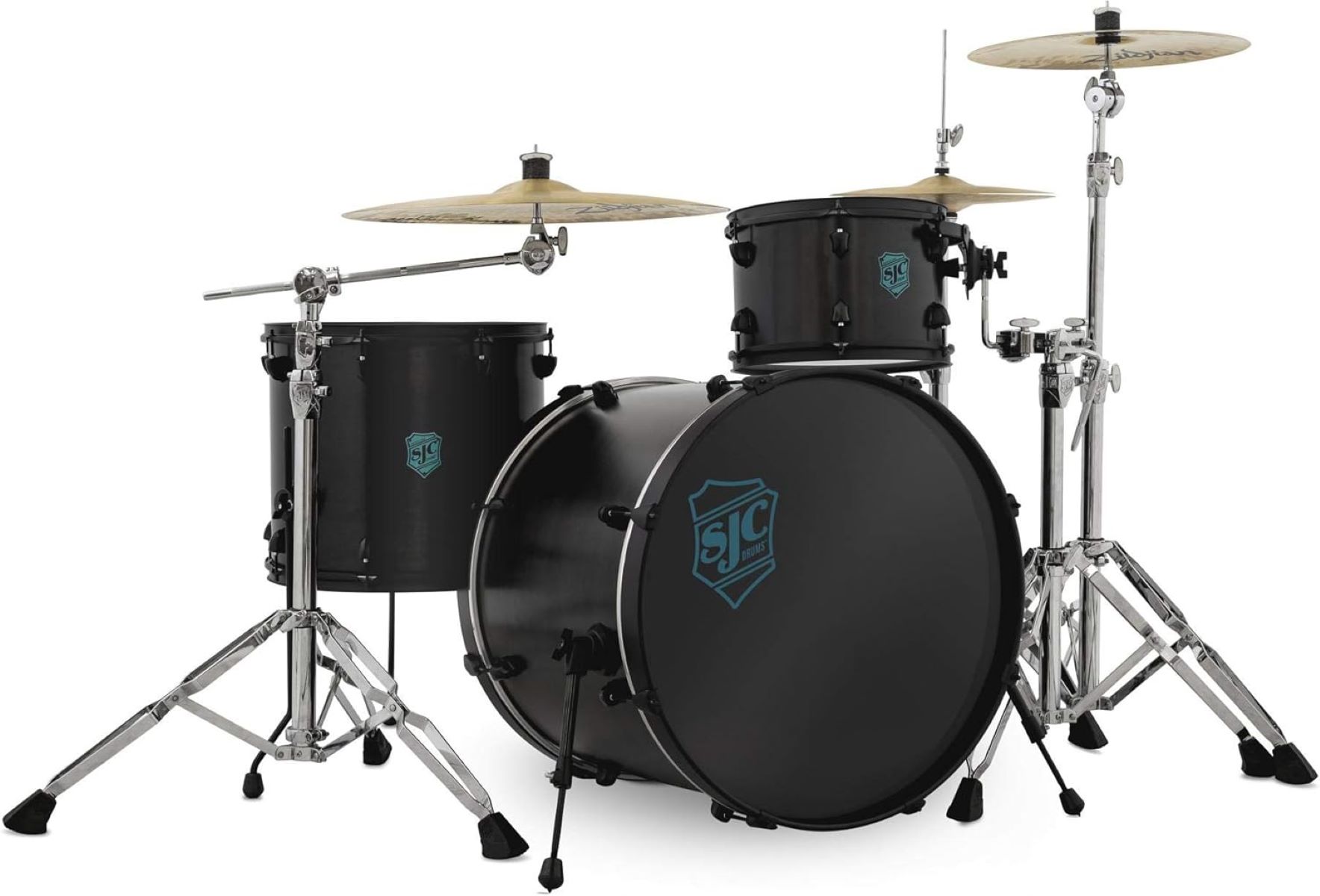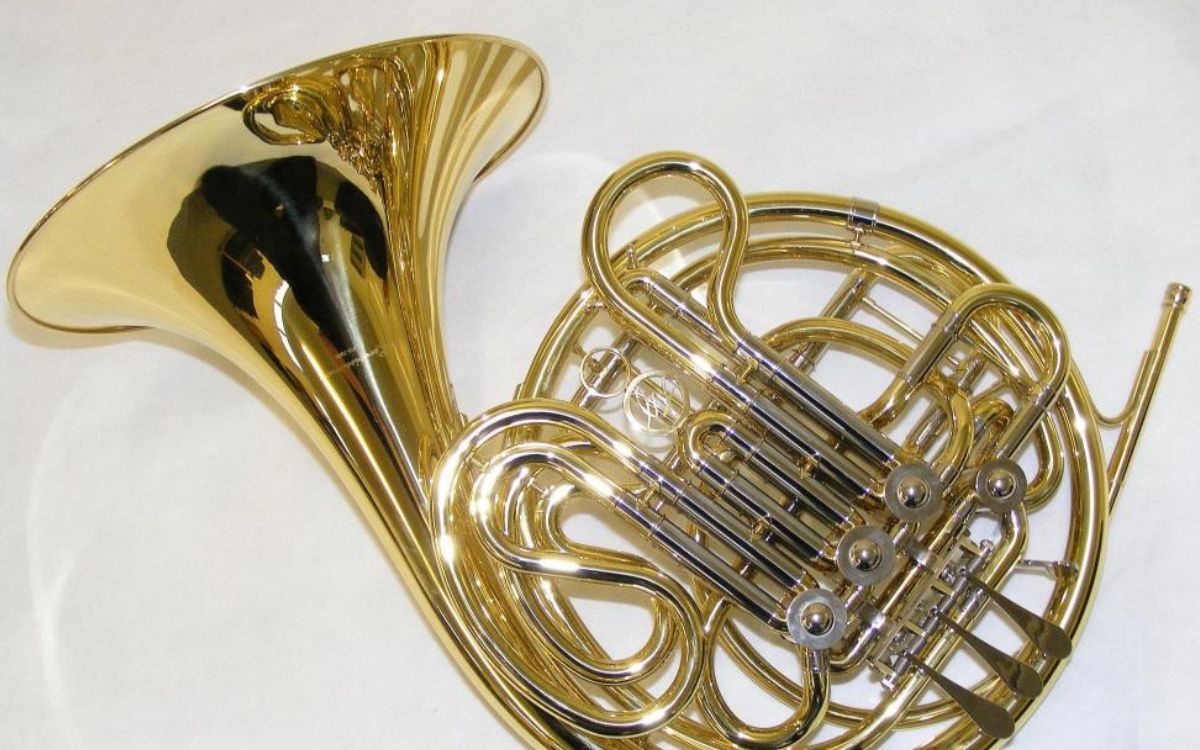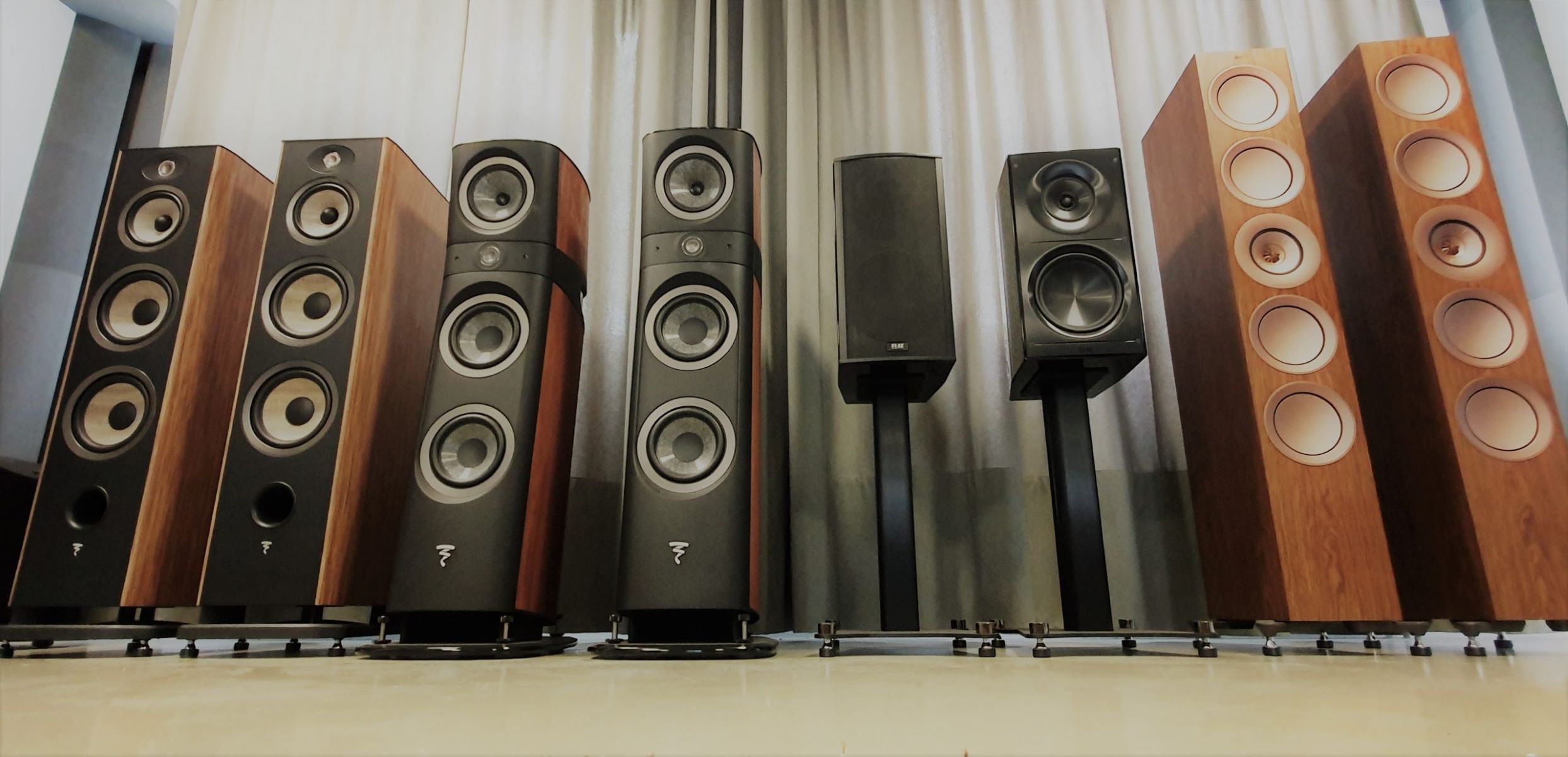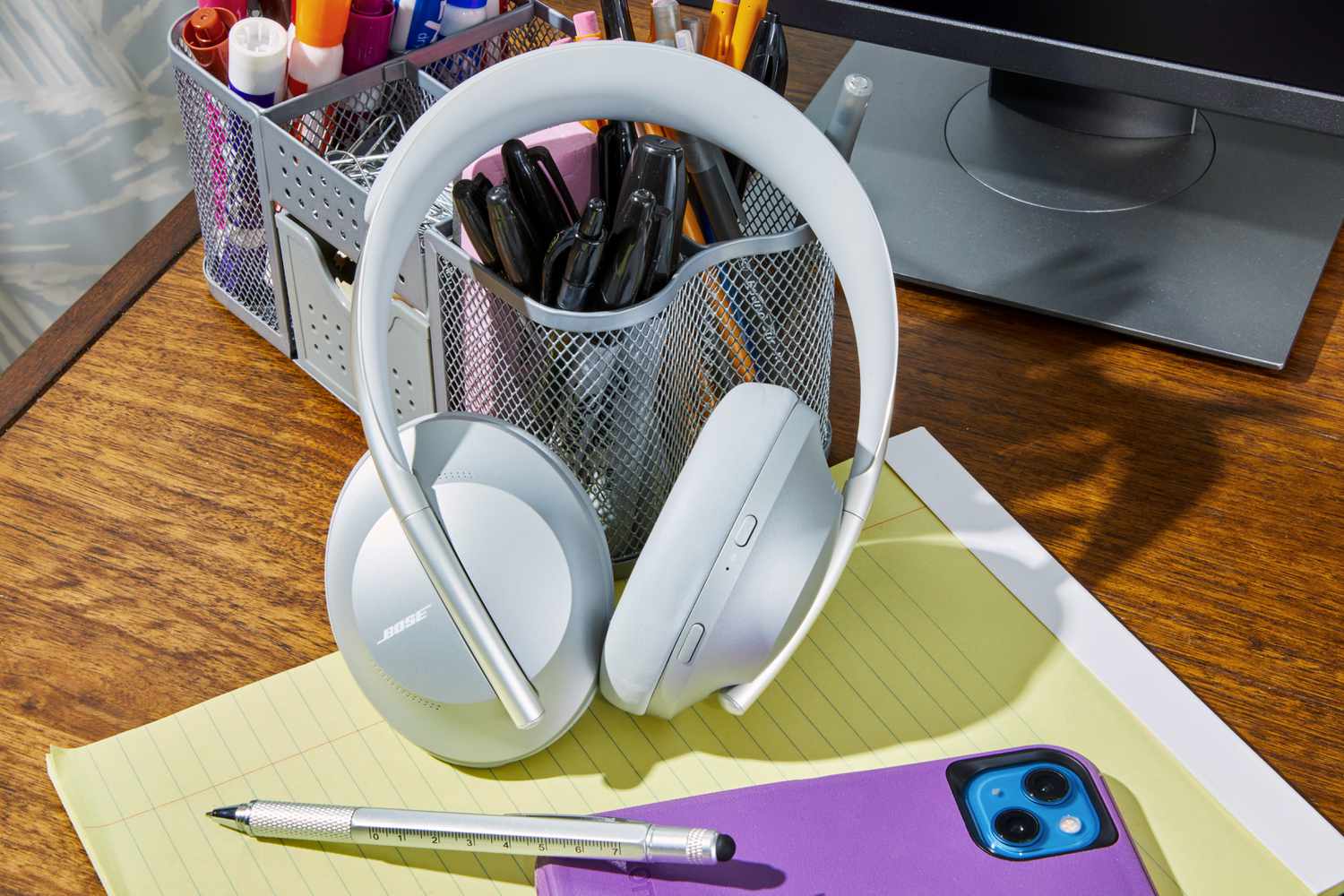Home>Devices & Equipment>Turntable>Why Does My Turntable Have So Much Noise
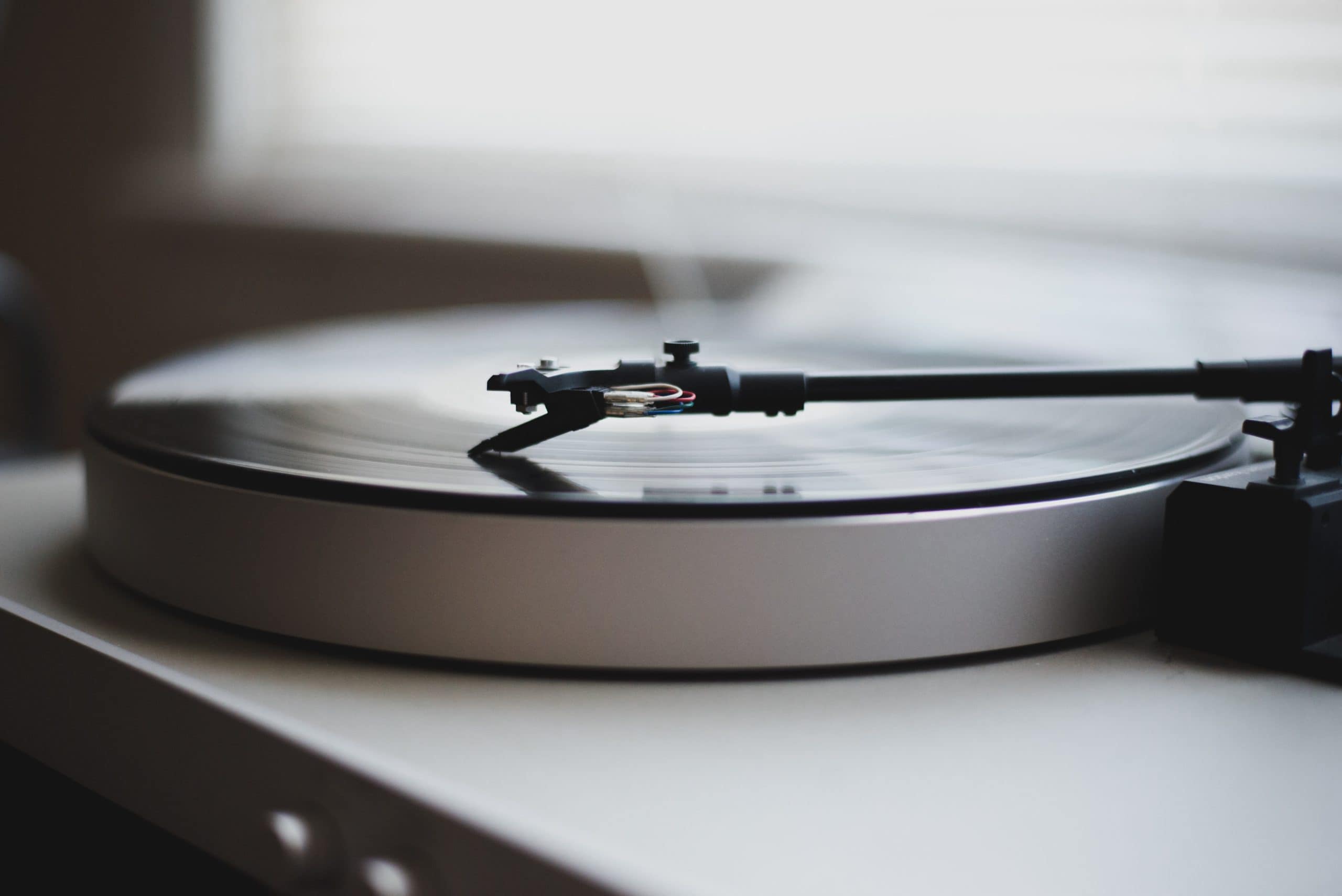

Turntable
Why Does My Turntable Have So Much Noise
Modified: January 22, 2024
Discover the reasons behind excessive noise on your turntable and how to fix it. Get a quieter and improved listening experience with our expert tips.
(Many of the links in this article redirect to a specific reviewed product. Your purchase of these products through affiliate links helps to generate commission for AudioLover.com, at no extra cost. Learn more)
Table of Contents
- Introduction:
- Understanding Turntable Noise:
- Possible Causes of Turntable Noise:
- Tracking Force:
- Cartridge Alignment:
- Platter and Motor Issues:
- Grounding and Electrical Interference:
- Dust and Dirt on Records:
- Worn Out or Misaligned Parts:
- Amplifier and Speaker Problems:
- How to Reduce Turntable Noise:
- Adjusting Tracking Force and Cartridge Alignment:
- Cleaning Records:
- Checking Platter and Motor:
- Improving Grounding and Shielding:
- Repairing or Replacing Worn Out Parts:
- Troubleshooting Amplifier and Speaker Issues:
- Conclusion:
Introduction:
Turntables have experienced a resurgence in popularity over the past few years, as vinyl records continue to captivate music enthusiasts with their warm and authentic sound. However, one common issue that turntable owners often encounter is excessive noise during playback. The pops, crackles, and hums can be frustrating and can detract from the overall listening experience.
In order to fully enjoy your vinyl collection, it’s essential to understand the various factors that can contribute to turntable noise and learn how to address them. This article will explore the primary causes of turntable noise and provide solutions to minimize or eliminate it.
Whether you’re a long-time vinyl enthusiast or a newcomer to the world of turntables, this comprehensive guide will equip you with the knowledge and techniques to optimize the performance of your turntable and enjoy a clean and crisp sound.
So let’s dive in and explore the causes of turntable noise, and how you can reduce it to fully appreciate the immersive experience that vinyl records offer.
Understanding Turntable Noise:
Before we delve into the possible causes of turntable noise, it’s important to have a basic understanding of what exactly constitutes turntable noise. Turntable noise refers to any unwanted sounds that are produced during playback, such as pops, crackles, hums, or distortion.
These noises can be caused by a variety of factors, including issues with the turntable itself, the setup of the turntable, the condition of the vinyl records, as well as external factors like electrical interference.
It’s worth noting that some level of surface noise is inherent in vinyl records, especially older or well-worn ones. This noise is usually described as a low-level crackle or hiss and is considered normal to a certain extent. However, excessive noise that is noticeable and disruptive to the listening experience may indicate an underlying issue that needs to be addressed.
Understanding the different types of turntable noise can help in diagnosing the problem and implementing the appropriate solutions. Here are some common types of turntable noise:
- Pops and Cracks: These are short, sharp sounds that occur during playback and are typically caused by dust, dirt, or scratches on the surface of the record. They can also be caused by static electricity.
- Hums and Buzzes: These are low-frequency sounds that are often caused by grounding issues or electrical interference from nearby electronic devices.
- Distortion: This occurs when the sound from the record becomes altered or distorted, resulting in a loss of clarity and fidelity. Distortion can be caused by various factors, including an improperly aligned cartridge, worn-out stylus, or a damaged record.
By understanding the various types of turntable noise and their potential causes, you can begin troubleshooting and implementing the necessary measures to improve your listening experience.
Possible Causes of Turntable Noise:
There are several factors that can contribute to the presence of noise in your turntable setup. Understanding these possible causes is crucial in order to effectively diagnose and address the issue. Here are some common culprits of turntable noise:
- Tracking Force: Incorrect tracking force, which is the downward pressure exerted by the stylus on the record groove, can lead to excessive noise. Too little tracking force can cause mistracking and result in skips and audible distortion, while too much tracking force can cause excessive wear on the records and increase noise levels.
- Cartridge Alignment: The cartridge, which houses the stylus, should be properly aligned with the record groove. Incorrect alignment can cause uneven tracking and lead to increased noise and distortion.
- Platter and Motor Issues: Mechanical problems with the turntable, such as an improperly balanced or misaligned platter, or issues with the motor, can result in vibrations and contribute to audible noise during playback.
- Grounding and Electrical Interference: Improper grounding or interference from other electrical devices can introduce unwanted noise into the audio signal. This noise is often heard as a low-level hum or buzz.
- Dust and Dirt on Records: Dust, dirt, and other debris on the surface of vinyl records can cause pops, crackles, and other noise during playback. Regular cleaning of records can help minimize these issues.
- Worn Out or Misaligned Parts: Over time, components of the turntable, such as the stylus, cartridge, or tonearm, can wear out or become misaligned, leading to increased noise and poor performance.
- Amplifier and Speaker Problems: Noise can also stem from issues with the amplifier or speakers in your audio system. Faulty connections, damaged cables, or malfunctioning components can introduce unwanted noise into your turntable setup.
By considering these potential causes, you can begin troubleshooting and identifying the specific issues that may be contributing to the noise in your turntable setup. In the next section, we will discuss how to minimize or eliminate turntable noise by addressing these underlying causes.
Tracking Force:
Tracking force refers to the downward pressure exerted by the stylus on the record groove during playback. It is crucial to have the correct tracking force set to ensure optimal performance and minimize noise.
When the tracking force is too low, the stylus may not make proper contact with the groove, resulting in mistracking. This can lead to skips, distortion, and increased noise. On the other hand, if the tracking force is too high, it can put excessive pressure on the record, causing unnecessary wear and potentially amplifying noise.
To determine the appropriate tracking force for your cartridge, consult the manufacturer’s specifications. This information can usually be found in the cartridge’s manual or on the manufacturer’s website. It is important to follow these guidelines as different cartridges have different requirements.
Adjusting the tracking force can usually be done by adjusting a counterweight or tonearm weight on the turntable. Use a tracking force gauge or a digital scale specifically designed for this purpose to ensure accuracy. The goal is to set the tracking force to the recommended range specified by the cartridge manufacturer.
Once the tracking force is properly set, retest the playback to see if the noise has reduced. If not, move on to other potential causes.
It’s worth mentioning that tracking force should be regularly checked and adjusted as the stylus and cartridge wear over time. A worn-out stylus can cause increased noise and distortion, so it is recommended to replace the stylus according to the manufacturer’s recommendation.
By properly setting the tracking force and ensuring it is within the recommended range, you can improve the performance of your turntable and reduce noise during playback.
Cartridge Alignment:
The proper alignment of the cartridge on your turntable is critical for accurate tracking and minimizing noise. Improper cartridge alignment can lead to uneven tracking, increased distortion, and unwanted noise during playback.
Cartridge alignment refers to the positioning of the cartridge stylus within the record groove. There are several alignment methods, including the Baerwald, Stevenson, and Lofgren alignments, each with its own set of mathematical calculations and alignment protractors.
To ensure proper cartridge alignment, you’ll need a cartridge alignment protractor specific to your turntable and alignment method. These protractors can be obtained from the cartridge or turntable manufacturer or can be found online. Follow the instructions provided with the protractor to accurately align your cartridge.
Proper alignment is achieved when the cartridge stylus is perpendicular to the record groove at two points along the alignment protractor. This ensures that the stylus is tracking the groove correctly and minimizing distortion and noise.
Incorrect cartridge alignment can manifest as various issues, including an uneven soundstage, channel imbalance, and increased surface noise. By aligning the cartridge properly, you can improve channel balance, reduce distortion, and minimize noise during playback.
It’s worth noting that cartridge alignment should be performed whenever you install a new cartridge or when you suspect alignment issues. Also, regular maintenance and cleaning of the stylus are essential to maintain optimal performance and reduce noise.
Take the time to carefully align your cartridge according to the recommended method and protractor. A properly aligned cartridge will enhance the overall sound quality and minimize unwanted noise, resulting in a more enjoyable listening experience.
Platter and Motor Issues:
Mechanical issues with the platter and motor of your turntable can contribute to noise during playback. These issues can cause vibrations and unwanted noise that interfere with the quality of your listening experience.
One common problem is an improperly balanced or misaligned platter. The platter should rest evenly and smoothly on the spindle without any wobbling or uneven movement. If the platter is misaligned, it can cause the stylus to track inconsistently, resulting in increased noise and distortion.
To address this issue, carefully inspect the platter and ensure it is properly seated on the spindle. If there are any signs of misalignment or imbalance, follow the manufacturer’s instructions to realign or balance the platter to address the issue.
In addition, the motor of the turntable can also be a source of noise. A noisy motor may produce vibrations that transfer to the platter and affect the sound quality. Check for any signs of motor issues such as unusual buzzing or grinding sounds.
If you suspect a problem with the motor, consult the turntable’s user manual or contact the manufacturer for guidance on how to troubleshoot and address motor-related issues.
Regular maintenance and cleaning of the platter and motor are important in ensuring optimal performance and minimizing noise. Keep the components free from dust and dirt, and lubricate them as recommended by the manufacturer to prevent friction-related noise.
By addressing platter and motor issues, you can minimize mechanical vibrations and noise, resulting in improved playback quality and a more enjoyable listening experience.
Grounding and Electrical Interference:
Grounding and electrical interference can play a significant role in introducing unwanted noise into your turntable setup. When not properly addressed, these issues can cause humming or buzzing sounds that can detract from the listening experience.
Grounding is the process of connecting the turntable’s grounding wire to a reliable ground source, such as a grounding screw on the amplifier or a dedicated grounding post. This serves to eliminate any electrical noise or interference that may be picked up by the turntable’s components.
If your turntable has a separate grounding wire, ensure it is securely connected to an appropriate grounding point. This can help reduce or eliminate grounding-related noise issues.
In some cases, electrical interference from nearby electronic devices can also contribute to turntable noise. Components like smartphones, computers, fluorescent lights, or Wi-Fi routers can emit electromagnetic radiation that can interfere with the delicate audio signals of the turntable.
To minimize electrical interference, try repositioning your turntable away from these potential sources. Increasing the distance between the turntable and electronic devices can help reduce the impact of electromagnetic interference and minimize noise.
Additionally, using high-quality shielded cables for the interconnects between your turntable, amplifier, and speakers can help minimize the transmission of electromagnetic noise.
If you have tried these steps and are still experiencing electrical interference, you may want to consider using an external audio interface or ground loop isolator. These devices can help eliminate or reduce electrical noise caused by ground loops, which can occur when there are multiple grounding paths in the audio system.
By properly grounding your turntable and minimizing electrical interference, you can significantly reduce noise and enjoy a cleaner and more pristine sound from your vinyl records.
Dust and Dirt on Records:
Dust and dirt on the surface of vinyl records can cause pops, crackles, and other noise during playback. These particles can get caught in the stylus and groove, leading to disruptions in the sound and a decrease in audio quality.
To minimize turntable noise caused by dust and dirt, it’s important to regularly clean your records. There are various methods and tools available for effective record cleaning:
- Carbon Fiber Brush: A carbon fiber brush is a simple and effective tool for removing surface dust and debris from records. Gently run the brush along the grooves in a sweeping motion, following the direction of the record rotation.
- Record Cleaning Solution: For more thorough cleaning, consider using a record cleaning solution and a microfiber cloth or a record cleaning brush. Apply a small amount of the solution to the cloth or brush and gently wipe the record in the direction of the grooves.
- Record Cleaning Machines: For a more professional and thorough cleaning, record cleaning machines use a combination of brushes, cleaning solutions, and vacuum suction to deep clean your records. These machines are especially beneficial for removing deep-seated dirt and grime.
Regardless of the method you choose, it is important to handle the records with care and avoid touching the playing surface with your fingers to prevent transferring oils and residues.
Regular cleaning of your records will not only help reduce turntable noise but also maintain the integrity and lifespan of your vinyl collection. It’s a worthwhile investment of time and effort to ensure optimal playback quality.
Worn Out or Misaligned Parts:
Over time, various components of a turntable can wear out or become misaligned, leading to increased noise and compromised performance. Identifying and addressing these worn-out or misaligned parts is essential for restoring optimal functionality and reducing turntable noise.
The stylus, also known as the needle, is one of the most critical components of a turntable. It can wear out over time due to regular use and should be replaced periodically, according to the manufacturer’s recommendations. A worn-out stylus can cause increased noise, distortion, and damage to your records.
The cartridge, which holds the stylus, should also be examined for wear and tear. Misalignment of the cartridge can result in improper tracking, increased distortion, and noise. If you suspect a misaligned or damaged cartridge, consult the turntable’s manual or a professional for guidance on how to realign or replace it.
The tonearm, which holds the cartridge and stylus, should be checked for any signs of misalignment or damage. In some cases, the tonearm may need to be adjusted, balanced, or calibrated to ensure proper tracking and reduce noise. Refer to the turntable’s manual or seek professional assistance for guidance on making these adjustments.
Other parts that can contribute to turntable noise include the belt (if your turntable is belt-driven) and the tonearm bearings. A worn or stretched belt can cause fluctuations in speed, resulting in pitch variations and increased noise. Replacing the belt can help restore correct speed and reduce noise. Similarly, worn or damaged tonearm bearings can result in excess friction and noise during playback. Replacing or lubricating the bearings can improve performance and reduce noise.
If you are unsure about diagnosing or replacing these parts, it is recommended to consult a qualified technician or turntable specialist who can assess and repair your turntable properly.
Regular maintenance and keeping track of the usage hours for various components can help you anticipate when parts may need replacement or adjustment. By addressing worn-out or misaligned parts, you can restore optimal performance, reduce noise, and enjoy your vinyl collection to its fullest potential.
Amplifier and Speaker Problems:
Turntable noise can also be caused by issues with the amplifier and speakers in your audio system. Faulty connections, damaged cables, or malfunctioning components can introduce unwanted noise into your turntable setup. It’s important to troubleshoot and address these issues to minimize noise and achieve optimal sound quality.
First, check all the connections between the turntable, amplifier, and speakers. Ensure that the cables are securely plugged in and that there are no loose connections. Loose or damaged cables can introduce noise into the audio signal, resulting in a degraded listening experience.
If you are using an external phono preamplifier, make sure it is properly connected and functioning correctly. The phono preamp amplifies the low-level turntable signal to a line-level signal for the amplifier. If the phono preamp is not working properly, it can introduce noise and affect the overall sound quality.
Next, examine the amplifier and speakers themselves. Faulty components or settings on the amplifier can lead to noise issues. Check for any blown fuses, damaged capacitors, or other visible signs of malfunction. Adjust the amplifier settings, such as the gain and tone controls, to their optimal levels to ensure clean and balanced sound reproduction.
Similarly, inspect the speakers for any damage or misalignment. Damaged speaker cones or tweeters can produce distorted sound and unwanted noise. Position the speakers properly and check that they are placed at the appropriate distance from the turntable to minimize interference.
If you are still experiencing noise issues after checking the connections, amplifier, and speakers, consider isolating the turntable to see if the noise persists. Connect the turntable to a different amplifier or use a pair of headphones to see if the noise is eliminated. This can help determine if the issue lies specifically with the turntable or if it is related to the amplifier and speakers.
It may be necessary to consult a professional audio technician or contact the manufacturer for further assistance if the amplifier or speakers require repair or troubleshooting beyond your expertise.
By addressing amplifier and speaker problems, you can eliminate potential sources of noise and ensure a clean and enjoyable listening experience with your turntable setup.
How to Reduce Turntable Noise:
Now that we have explored the possible causes of turntable noise, let’s discuss some steps you can take to reduce or eliminate the noise and improve your overall listening experience.
- Adjusting Tracking Force and Cartridge Alignment: Ensure that the tracking force is set correctly according to the manufacturer’s recommendations for your cartridge. Additionally, use a cartridge alignment protractor to align your cartridge properly within the record groove.
- Cleaning Records: Regularly clean your records to remove dust, dirt, and debris that can cause pops and crackles. Using a carbon fiber brush or a record cleaning solution can help to maintain a clean playing surface.
- Checking Platter and Motor: Inspect your turntable’s platter and motor for any misalignment or mechanical issues. Properly align and balance the platter, and ensure that the motor is functioning smoothly to minimize vibrations and noise.
- Improving Grounding and Shielding: Make sure that your turntable is properly grounded and that you are using shielded cables to minimize electrical interference. Repositioning the turntable away from electronic devices can also help reduce interference.
- Repairing or Replacing Worn Out Parts: Monitor the condition of your turntable’s stylus, cartridge, and other components. Replace worn-out parts according to the manufacturer’s recommendations, and address any misaligned or damaged parts to improve performance and reduce noise.
- Troubleshooting Amplifier and Speaker Issues: Examine the connections, settings, and components of your amplifier and speakers. Ensure that all connections are secure, settings are optimized, and components are functioning correctly. Consider isolating the turntable to identify if the noise is specific to the turntable or related to the amplifier and speakers.
By implementing these steps, you can significantly reduce turntable noise and enhance the quality of your audio playback. Remember to perform regular maintenance, including cleaning your records and monitoring the condition of your turntable’s components, to maintain optimal performance over time.
Keep in mind that each turntable setup is unique, and the specific steps required to reduce noise may vary. If you encounter persistent noise issues or require technical assistance, it may be helpful to consult with a professional or contact the manufacturer for further guidance.
Adjusting Tracking Force and Cartridge Alignment:
When it comes to reducing turntable noise, one of the primary areas to focus on is adjusting the tracking force and cartridge alignment. These two factors play a crucial role in ensuring proper stylus-to-groove contact and minimizing distortion and noise during playback.
Tracking force refers to the downward pressure that the stylus exerts on the record groove. It is essential to have the correct tracking force set to avoid mistracking, skipping, and increased noise. Too little tracking force can result in mistracking and distortion, while too much can damage the record and cause unnecessary noise. Consult the cartridge manufacturer’s guidelines to determine the recommended tracking force for your specific cartridge.
Adjusting the tracking force typically involves using a tracking force gauge or digital scale. By adjusting the counterweight or tonearm weight, you can achieve the desired tracking force. It’s important to follow the manufacturer’s instructions and make fine adjustments until the tracking force falls within the recommended range.
Cartridge alignment is another critical aspect of reducing turntable noise. Proper alignment ensures that the stylus sits correctly in the record groove, allowing for accurate tracking and minimizing distortion and noise. Different alignment methods, such as Baerwald or Stevenson, require specific calculations and alignment protractors.
To align the cartridge, you’ll need a cartridge alignment protractor designed for your particular alignment method and turntable model. Place the protractor on the platter, and follow the manufacturer’s instructions to align the cartridge so that it sits perpendicular to the record groove. This alignment process allows the stylus to effectively track the groove and reduce unwanted noise.
By adjusting the tracking force and aligning the cartridge properly, you can significantly reduce turntable noise and improve the overall sound quality. Remember that tracking force should be checked and adjusted periodically, especially when installing a new cartridge or stylus, to ensure optimal performance.
It’s essential to handle the delicate stylus and cartridge with care during the adjustment process to avoid any accidental damage. If you feel uncertain about making these adjustments yourself, it’s advisable to seek guidance from a knowledgeable technician or consult the manufacturer for assistance.
Cleaning Records:
Clean records are essential for maintaining optimal sound quality and reducing turntable noise. Dust, dirt, and debris on the surface of vinyl records can cause pops, crackles, and other unwanted noise during playback. Regular cleaning of your records will help preserve their condition and ensure a cleaner audio experience.
There are various methods and tools available for effective record cleaning, depending on the level of cleaning required:
1. Carbon Fiber Brush: A carbon fiber brush is a simple yet effective tool for removing surface dust and debris from records. Gently run the brush along the grooves in a sweeping motion, following the direction of the record rotation. The carbon fibers generate static electricity, allowing them to attract and lift the dust particles off the surface of the record.
2. Record Cleaning Solution: For more thorough cleaning, consider using a record cleaning solution along with a microfiber cloth or a dedicated record cleaning brush. Apply a small amount of the cleaning solution to the cloth or brush and gently wipe the record in the direction of the grooves. This helps remove deeper-seated dirt and grime from the record’s surface.
3. Record Cleaning Machines: For a more professional and comprehensive cleaning, consider using a record cleaning machine. These machines use a combination of brushes, cleaning solutions, and vacuum suction to deep clean your records. They are especially effective at removing stubborn dirt and grime that manual cleaning may not be able to eliminate fully.
When cleaning your records, it’s important to handle them with care. Avoid touching the playing surface with your fingers as this can transfer oils and residues, potentially causing more harm. Instead, hold the record by the edges or use clean cotton gloves to prevent contamination.
Regularly cleaning your records, especially before each play, can significantly reduce turntable noise caused by dust and debris. It helps maintain a clean playing surface, allowing for smoother stylus movement and minimizing the risk of mistracking or added noise.
Keep in mind that deep-seated scratches or damage to the record may not be fully resolved through cleaning. In such cases, it may be necessary to consider professional record restoration services or, in extreme cases, to replace heavily damaged records.
By making record cleaning a part of your regular maintenance routine, you can ensure a pristine playing surface and enjoy the best possible sound quality from your vinyl collection.
Checking Platter and Motor:
Mechanical issues with the platter and motor of your turntable can contribute to turntable noise and affect the overall audio quality. It is crucial to regularly inspect and maintain these components to ensure smooth operation and reduce noise during playback.
1. Platter: The platter is the rotating disc where you place your vinyl records. One common cause of turntable noise is an improperly balanced or misaligned platter. An unbalanced platter can cause uneven rotation, leading to increased vibrations, stylus tracking issues, and ultimately, noise during playback.
Check the platter to ensure it is properly centered and sitting flat on the spindle. Make sure there is no wobbling or uneven movement. If you notice any misalignment or imbalance, consult your turntable’s user manual or manufacturer’s instructions to realign or balance the platter correctly. This may involve adjusting screws or using special tools provided by the manufacturer.
2. Motor: The motor is responsible for powering the rotation of the platter. A malfunctioning motor can introduce noise and vibration into the turntable system, which can affect the sound quality. Listen carefully for any unusual buzzing, grinding, or clicking sounds coming from the motor.
If you suspect a problem with the motor, consult your turntable’s user manual or contact the manufacturer for guidance on how to troubleshoot and address motor-related issues. This may involve cleaning, lubricating, or, in some cases, replacing the motor.
Regular maintenance is essential for keeping the platter and motor in optimal condition. Clean the platter and spindle regularly to remove any dust or debris that may have accumulated. Lubricate the motor if recommended by the manufacturer.
Reducing turntable noise is closely related to maintaining smooth and stable rotation. By ensuring the platter is balanced and aligned correctly, and the motor is functioning properly, you can minimize vibrations, which in turn reduces noise during playback. This results in a cleaner and more enjoyable audio experience with your turntable.
Improving Grounding and Shielding:
Improper grounding and lack of shielding can introduce unwanted noise and interference into your turntable setup, negatively impacting the audio quality. By improving grounding and implementing effective shielding techniques, you can significantly reduce turntable noise and enjoy a cleaner sound.
1. Grounding: Grounding ensures that the turntable and audio system are connected to a reliable grounding source, allowing for the elimination of any electrical noise or interference that may be picked up. Improper grounding can result in audible humming or buzzing sounds.
Check if your turntable has a dedicated grounding wire and ensure that it is securely connected to an appropriate grounding point. This can be a grounding screw on the amplifier, a grounding post, or any other recommended grounding point specified by your turntable manufacturer.
2. Shielding: Shielding involves protecting the audio signal from external sources of interference by using shielded cables and minimizing the impact of electromagnetic fields.
Ensure that you are using high-quality shielded cables for the connections between the turntable, amplifier, and speakers. Shielded cables help prevent electromagnetic interference (EMI) and radio-frequency interference (RFI) from corrupting the audio signal. Avoid running audio cables in close proximity to power cables or other sources of electromagnetic radiation.
In some cases, additional shielding may be required. Consider using shielded turntable mats or upgrading to a turntable with better internal shielding if you continue to experience interference issues.
3. Ground Loop Isolator: If you are still encountering noise despite proper grounding, you may be dealing with a ground loop. A ground loop occurs when multiple grounding paths in the audio system cause electrical potential differences, leading to hum or buzz.
In such cases, a ground loop isolator can be a valuable tool. It breaks the ground loop by inserting a device between the turntable and the amplifier, effectively isolating the audio signal from the ground while maintaining proper grounding for safety.
Improving grounding and implementing effective shielding techniques is key to reducing noise in your turntable setup. By ensuring proper grounding and using shielded cables, you can minimize electrical noise, interference, and hum, resulting in cleaner and more accurate audio playback.
Always refer to the specific instructions provided by your turntable and audio system manufacturers for the best practices in grounding and implementing shielding measures.
Repairing or Replacing Worn Out Parts:
Over time, various components of a turntable can wear out or become misaligned, leading to increased noise and compromised performance. Identifying and addressing these worn-out or misaligned parts is essential for restoring optimal functionality and reducing turntable noise.
1. Stylus and Cartridge: The stylus, also known as the needle, is a crucial part of the turntable that comes into direct contact with the record’s grooves. Regular use and wear can degrade the stylus over time, resulting in increased noise, distortion, and potential damage to your records. It is recommended to replace the stylus based on the manufacturer’s recommended usage hours or signs of wear.
Additionally, the cartridge that houses the stylus may also need to be replaced if it is damaged or misaligned. Misalignment can lead to improper tracking, increased distortion, and noise during playback. Consult the turntable’s manual or a professional to assess if your cartridge needs repair or replacement.
2. Tonearm and Tonearm Bearings: The tonearm holds the cartridge and stylus in place and facilitates their movement across the record. Verify that the tonearm is properly balanced, aligned, and moves smoothly. Worn-out or damaged tonearm bearings can introduce excess friction and noise. If necessary, lubricate or replace the bearings according to the manufacturer’s recommendations.
3. Components related to Platter Rotation: Check the belt (for belt-driven turntables) and the motor to ensure they are in good condition. A worn or stretched belt can cause speed fluctuations, resulting in pitch variations and increased noise. Replace the belt as needed. If the motor is malfunctioning, consult the turntable’s manual or contact the manufacturer for guidance on troubleshooting or replacing the motor if necessary.
4. Other Worn Out Parts: Regularly inspect other components such as the wiring, connections, and switches. Over time, these parts can degrade or become loose, leading to increased noise or signal degradation. Repair or replace any worn-out or damaged parts to maintain the optimal performance of your turntable.
If you are uncertain about repairing or replacing these parts yourself, it is advisable to seek guidance from a knowledgeable technician or consult the manufacturer for assistance. They can help assess the condition of your turntable and provide you with the recommended course of action to address any worn-out or misaligned parts effectively.
Regular maintenance, monitoring the usage hours of various components, and addressing worn-out or misaligned parts promptly will help reduce turntable noise and ensure better performance and longevity for your turntable.
Troubleshooting Amplifier and Speaker Issues:
When experiencing turntable noise, it’s important to consider the amplifier and speakers in your audio system as potential sources. Faulty connections, damaged cables, or malfunctioning components can introduce unwanted noise into your turntable setup. Troubleshooting and addressing these issues can significantly reduce noise and improve overall sound quality.
1. Check Connections: Ensure that all connections between the turntable, amplifier, and speakers are secure. Loose or damaged cables can cause noise issues, so inspect them carefully. Consider using high-quality cables for optimal signal transmission and minimizing signal degradation.
2. Amplifier Settings: Adjust the settings on your amplifier for optimal performance. Check the gain, balance, and tone controls to ensure they are properly adjusted. Setting the gain too high can introduce noise, while incorrect tone control settings can affect the overall sound quality.
3. Speaker Placement: Speaker placement can also impact turntable noise. Ensure that the speakers are positioned correctly, away from any possible sources of interference and at an appropriate distance from the turntable to minimize vibrations and resonance. Experiment with different speaker placements to find the optimal position for reducing noise and achieving balanced sound.
4. Speaker Condition: Examine the speakers for any visible damage or wear. Damaged speakers or those with loose or torn parts can produce distorted sound and unwanted noise. Check the speaker cones, tweeters, and other components to ensure they are in good condition. If you suspect a problem, consult a professional or contact the speaker manufacturer for guidance on repair or replacement.
5. External Interference: External interference can also affect the performance of your audio system. Keep the turntable away from other electronic devices that may generate electromagnetic interference, such as Wi-Fi routers, fluorescent lights, or power transformers. Moving the turntable or using shielded cables can help minimize the impact of external interference.
6. Isolate the Turntable: To determine if the noise is specifically related to the turntable or the amplifier/speakers, try isolating the turntable. Connect the turntable to a different amplifier or use a pair of headphones directly with the turntable. If the noise persists, it is likely an issue with the turntable. If the noise disappears, further troubleshooting of the amplifier and speakers is necessary.
If troubleshooting basic amplifier and speaker issues does not resolve the noise problem, it may be beneficial to consult a professional audio technician or contact the manufacturer for further assistance. They can provide specialized guidance based on the specific make and model of your equipment.
By troubleshooting and addressing any issues with the amplifier and speakers, you can reduce turntable noise and achieve a cleaner and more accurate audio playback.
Conclusion:
Turntable noise can be a frustrating issue that hampers the enjoyment of your vinyl collection. However, by understanding the various factors that contribute to turntable noise and implementing the appropriate solutions, you can significantly improve the listening experience.
In this guide, we explored the possible causes of turntable noise, including tracking force, cartridge alignment, platter and motor issues, grounding and electrical interference, dust and dirt on records, worn-out or misaligned parts, and amplifier and speaker problems. By addressing these factors, you can effectively reduce the noise and achieve a cleaner and more immersive sound.
Adjusting the tracking force and ensuring proper cartridge alignment are essential steps in minimizing noise. Regularly cleaning your records, checking the platter and motor for proper alignment, and improving grounding and shielding techniques also contribute to reducing noise. Repairing or replacing worn-out or misaligned parts and troubleshooting issues with the amplifier and speakers are vital for maintaining optimal performance.
Remember, each turntable setup is unique, and the solutions may vary. It is important to consider the specific recommendations of your turntable’s manufacturer and engage professional assistance when necessary.
By employing these strategies and incorporating regular maintenance and care into your turntable routine, you can enjoy a superior audio experience, free from excessive noise and distortion. Savour the warm, authentic sound that vinyl records offer and immerse yourself in the rich world of music.
Embrace the journey of exploring your vinyl collection with a quieter turntable that brings your favorite music to life. Happy listening!


